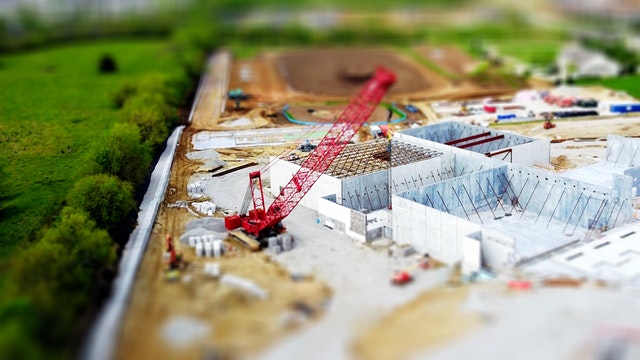I t is the dawn of the next Industrial Revolution. Labour is being liberated by new technology. We’ll be visiting more state-of-the-art machines on our construction sites rather than armies of hard-hatted guys. Currently, robots with circuit-board brains and screw-fastened bodies may construct full-sized houses for humans in only a day. 3D printing can create buildings with zero waste, powered by electricity or sunlight’s energy.
t is the dawn of the next Industrial Revolution. Labour is being liberated by new technology. We’ll be visiting more state-of-the-art machines on our construction sites rather than armies of hard-hatted guys. Currently, robots with circuit-board brains and screw-fastened bodies may construct full-sized houses for humans in only a day. 3D printing can create buildings with zero waste, powered by electricity or sunlight’s energy.
Automated structure could see bot-made homes quickly built in remote areas of emerging markets and inaccessible disaster zones to offer shelter quickly. Bots could possibly, even construct or print houses and develop residential plumbing services and general plumbing plans on extra-terrestrial planets. So it is fitting that students at the University of Washington can grab a glimpse of this new, 135,000 square-foot computer science building in augmented reality before construction is finished.
The university’s contractor for the job, Mortenson Construction, has assembled a mobile program for iOS and Android devices that enable users to see a 3D version of the $105 million CSE2 construction while work progresses. With the Mortenson AR/VR program, students can point their smartphone in the construction site to see a 3D representation of the building, designed by LMN Architects. The augmented reality experience also operates by scanning a downloadable mark, which can be found within the program. The construction model can be seen directly on the device’s screen or via a VR headset.
When the hologram is obtained, students can walk around the model and see its laminated architectural trusses from different angles. Users can also have a peek in the lobby, workroom, and robotics laboratory in 360-degree virtual reality. A normal campus building project like CSE2 can last two decades or more. This window presents a tremendous opportunity to engage the public and to also build excitement around campus. AR and VR represent a huge improvement over conventional public participation methods like flyers, fencing signage or a site. We’re scratching the surface of what is possible, according to Marc Kinsman, job direct from Mortenson’s in-house technology group, through a blog article.
According to a company spokesperson, the program was built using Unity, with Vuforia integrated for picture recognition; the program relies heavily on researched markers to be used at the construction site. Furthermore, Mortenson provided the program to the university as a value-added service for this particular project. They do not intend to upgrade the iOS variant for ARKit when iOS 11 ships, but they will examine its use should they employ the program to future projects.
Mortenson is also applying augmented reality into their work on building sites. They lay claim to being among the first construction companies to work together with the DAQRI Smart Helmet. For a hospital job, employees analyzed an application that allowed them to see electrical, mechanical, and plumbing drawings overlaid on the work site via the helmet’s display, including any sources of potential plumbing emergency including blocked drains or burst pipes.
 Drones
Drones
We know them as miniature, remotely controlled quadcopters, birthed amid cloud and code, and capable of carefully transporting a variety of materials. Equipped with bird’s eye and 3D-model perspectives of building websites, drone data has significantly improved how employees on a job throughout different departments communicate with one another. US start-up Skycatch is presently using highly automated drones on several high-profile construction jobs – rumoured to include the new 175-acre Apple Park in Cupertino, California.
Autonomous vehicles
Japanese construction equipment firm Komatsu has taken things up a notch by using Skycatch drones to be the eyes of fully automatic bulldozers. According to a report from the BBC and an IT consulting company, 3D versions of a construction site are sent from the drones to a computer, which then transmits the data to the unmanned machines to plot its program. German automotive company Daimler also began to test autonomous trucks in 2015. With the support of part supplier Bosch, it expects to place the fully automated vehicle to real use by “the start of the next decade” – just about three decades off. So, by 2030, delivery drivers might be a distant memory, as trucks are loaded by robots, self-dispatched, and automatically offloaded.
3D printers
Due to additive production, better called 3D printing, it’s now possible to print just about anything, such as building materials like bricks and concrete. In China, some firms claim to have printed whole constructions from concrete through hall-sized 3D printers in only hours. However, structural confidence is at a low and no one wants to live in these Chinese homes, according to experts in the area. Tapping into the study done at the University of Eindhoven, UAE-based building company DuBox was able to publish a “safer” concrete component. Can it support the construction? That is what they care about. As they publish, they can even put sensors into the mix, which may tell them about the conditions, like the strength of the completed construction, today and in the long run.
In 3D printing, there’s also precise use of material as you publish according to calculated structural power, so there’s virtually no waste. Additionally, this opens up an entirely new type of dimension for architects, where practical, complicated and odd-shaped designs can exist. After 3D printing is fully commercialised, homebuilding will be altered forever. Expect to find a 3D-printing room and network performance management integrated into each house of the future, which homeowners can use to publish everyday objects such as lamps, plates, towels, faucets – even the kitchen sink.
Recycling Platforms
The construction sector is among the world’s most heinous pollutors. In the UK alone, about half of the country’s 200 million tonnes of waste came from the building business in 2012. Digital start-ups like LOOP, founded last year by Lydia Dutton and Terry Clarke, aims to address these problems with an internet platform for the building industry. The LOOP Digital Marketplace joins supply and demand, allowing external and internal trading, and production of material wishlists for structural timber beams and frames, roofing architectures and the like. Members get ‘Material Asset Passports’ with the intention to create sharing of construction materials “business as usual” across the constructed environment, said Dutton. England’s Crossrail Project, the future 118-kilometre railway line running through parts of London and the home counties, is a client.
